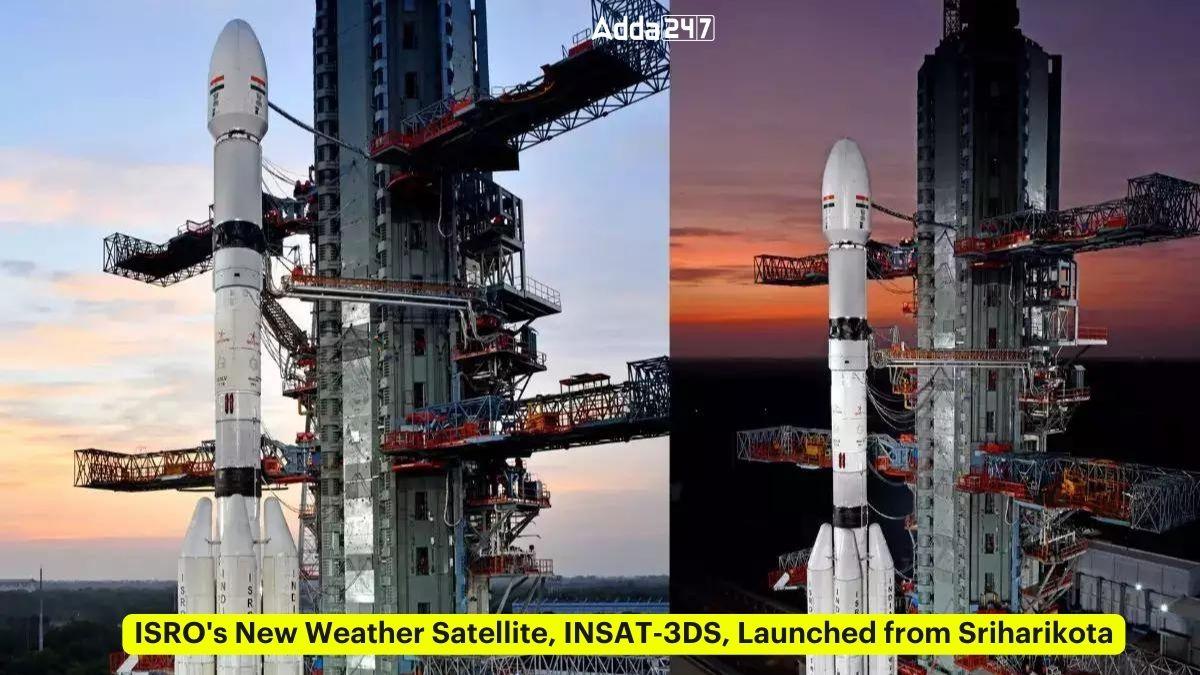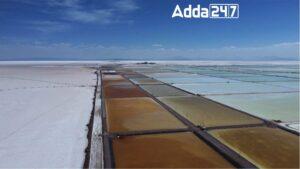Introduction to INSAT-3DS
The Indian Space Research Organisation (ISRO) has once again marked its presence in the space arena with the successful launch of its advanced meteorological satellite, INSAT-3DS. Launched on Saturday at 5:35 pm from the Satish Dhawan Space Centre – SHAR, Sriharikota, Andhra Pradesh, the INSAT-3DS mission symbolizes a significant leap in the field of meteorology. This satellite, serving as a successor to the Third Generation Meteorological Satellite, underscores ISRO’s commitment to enhancing weather forecasting and environmental monitoring capabilities.
Launch Details-INSAT-3DS
The GSLV-F14/INSAT-3DS mission, financed entirely by the Ministry of Earth Sciences, is a pivotal moment for ISRO. It marks the 16th mission of the GSLV (Geosynchronous Satellite Launch Vehicle) series, aiming to place the INSAT-3DS meteorological satellite into the Geosynchronous Transfer Orbit (GTO). The ultimate goal is to position the satellite in a Geo-stationary Orbit through orbit-raising maneuvers, ensuring a stable platform for advanced meteorological observations.
Cutting-Edge Technology and Payloads
INSAT-3DS comes equipped with state-of-the-art payloads, including a 6-channel Imager and a 19-channel Sounder. This advanced instrumentation is designed to provide unparalleled meteorological data collection, facilitating detailed and accurate weather forecasts. The inclusion of these sophisticated payloads underscores ISRO’s dedication to employing the latest technology in its missions, aiming to provide significant benefits to various sectors including agriculture, disaster management, and environmental monitoring.
Mission Objectives-INSAT-3DS
The primary objectives of the INSAT-3DS mission are multifaceted, focusing on enhancing Earth observation capabilities:
- Surface and Ocean Monitoring: By keeping a vigilant eye on Earth’s surface and oceans, INSAT-3DS will provide crucial data for environmental monitoring, helping in the assessment of climate change impacts and aiding in sustainable resource management.
- Atmospheric Condition Analysis: The satellite is designed to offer valuable information on atmospheric conditions through vertical profiles. This will play a critical role in improving weather prediction models, thus aiding in better planning and preparedness for weather-related phenomena.
- Data Collection and Sharing: INSAT-3DS will manage the collection and dissemination of data from Data Collection Platforms (DCPs). This will ensure the seamless exchange of meteorological information among various national and international agencies, enhancing global collaboration in weather forecasting and environmental monitoring.
- Support for Search and Rescue Services: The mission also aims to bolster search and rescue operations. By providing timely and accurate data, INSAT-3DS will enhance the efficiency of search and rescue services, potentially saving lives during natural disasters and other emergencies.
Important takeaways for all competitive exams:
- ISRO Headquarters: Bengaluru;
- ISRO Founder: Vikram Sarabhai;
- ISRO Founded: 15 August 1969;
- ISRO Officeholder: S. Somanath (Chairperson).



 Mankind Pharma Acquires Bharat Serums an...
Mankind Pharma Acquires Bharat Serums an...
 Discovery of Lithium Resources in Mandya...
Discovery of Lithium Resources in Mandya...
 What is Blue Screen of Death?
What is Blue Screen of Death?
